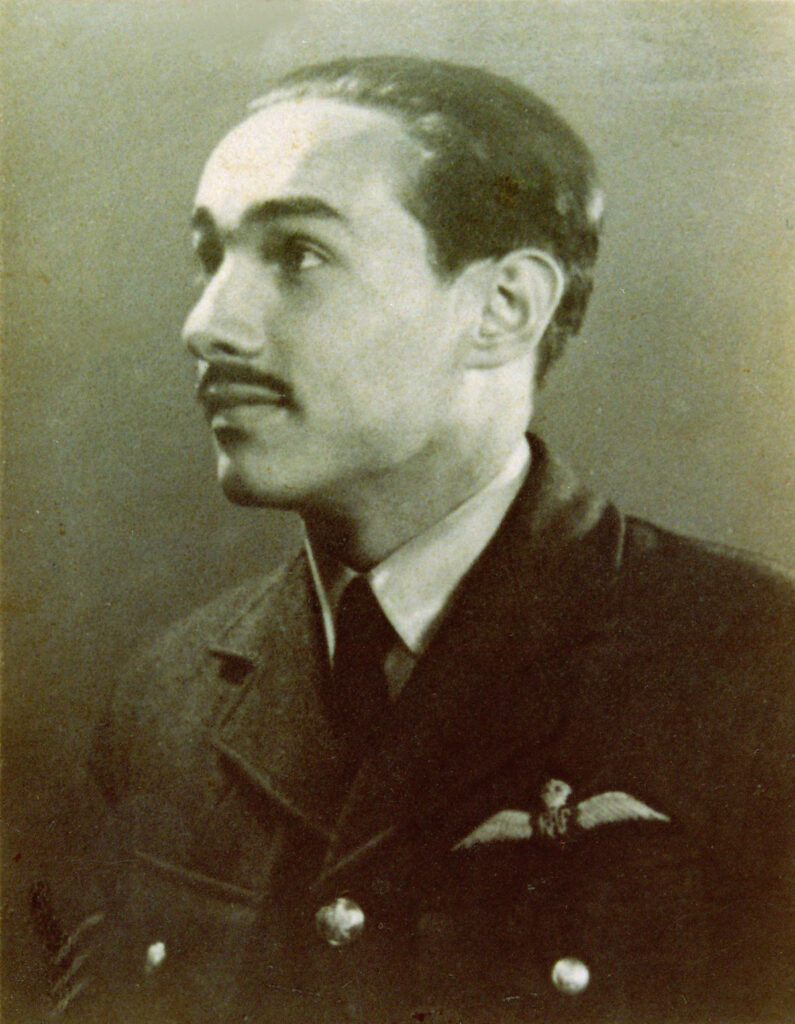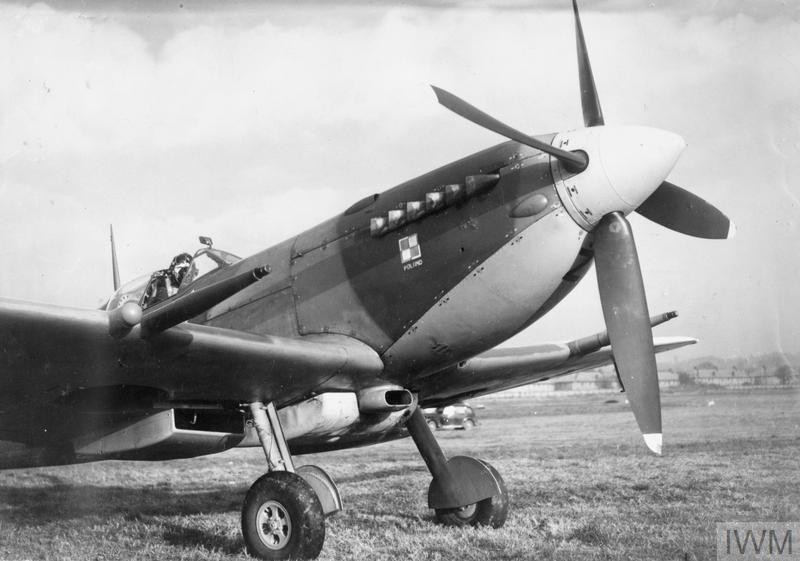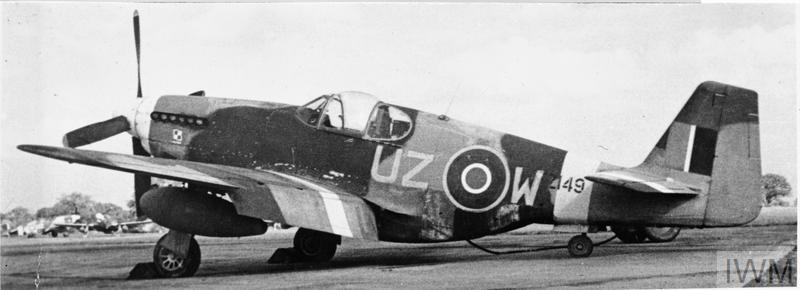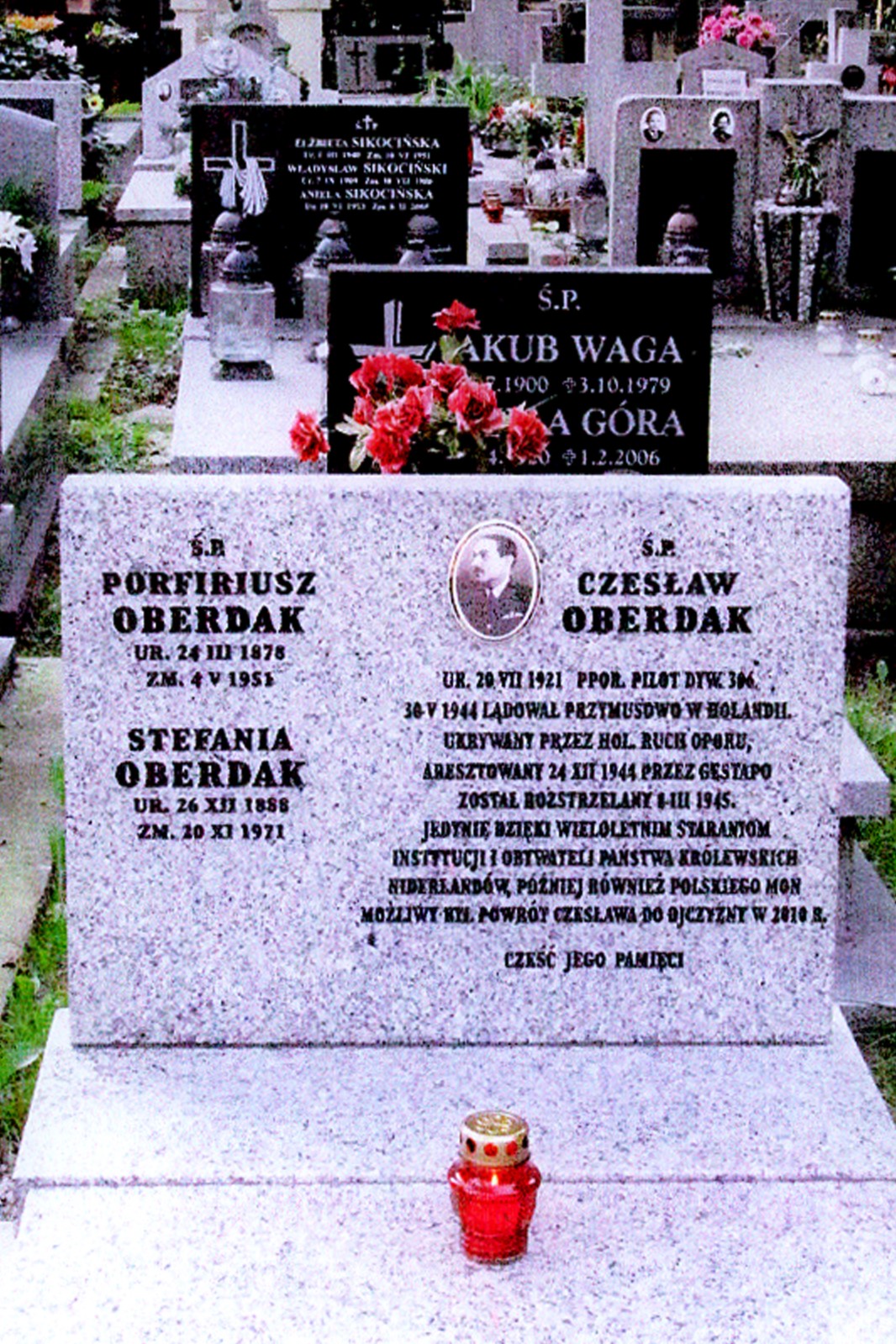Czesław Oberdak
The Polish victim of Woeste Hoeve remained forgotten for a long time
His name was unknown for a long time, Czesław Oberdak. After the mass execution at Woeste Hoeve in 1945 he was not identified. As an anonymous victim, he was buried first in Uchelen and then in Loenen until the journalist Richard Schuurman started looking after a letter from Czesław’s sister, Ludmilla Oberdak. Thanks to that search, this Polish airman was identified, his name is on the monument at Woeste Hoeve and his remains were buried in the family grave in Kraków in 2009. All this can be read in the book that Schuurman wrote ‘Track to Woeste Hoeve’.
A childhood dream between the Two World Wars
Czesław Oberdak was born on July 20, 1921 in Kraków, Poland. There he grows up with his older sister, Ludmila, and a younger brother, Roman. His childhood dream is to become a pilot. In 1939 he started that dream at the Air Force School in Poznań. When the Germans invaded Poland in September 1939, he, like so many other Polish soldiers, fled Poland. He follows the route via Romania, Yugoslavia and Italy. In France he joins the Polish Air Force formed there in Lyon. His stay there is temporary. Most Poles were evacuated to the United Kingdom when France fell in June 1940, including Czesław.
Czesław Oberdak gets his wings
His training as a pilot continued in the RAF (Royal Air Force) and ran from March 1941 to December 1943, a time during which he also completed officer training in Cosford. His first operational post is with the 306 Squadron ‘Torun’.

One of the Polish units in the RAF Air Force with the Polish designation 306 Dywizjon Myśliwski “Toruński”. The squadron was initially based in Heston. In the archives of the Imperial War Museum you can still find a recording with film number CGA 202~293 of an attack by Oberdak in his Spitfire MkV on an ME210.
Later the squadron moves to Coolham, Sussex. Coolham is a simple airfield that must prepare the pilots for the conditions in Europe when the units behind the front start operating on temporary airfields. The squadron is also switching from Spitfires (including the MkIX above) to the Mustang MkIII as an aircraft.


On May 5, 1944, Oberdak was promoted to Flying Officer. (In addition to Oberdak, the Squadron above the Netherlands also lost the pilot Kołoszczyk in September 1944. More about him on his own page.
Hiding in the Netherlands
A few weeks after his promotion, on May 30, Czesław escorts American B-17 bombers on a mission to the Junkers aircraft factories in Halberstadt. During the return journey, his P-51 Mustang MkIII encounters technical problems near the German/Dutch border. He makes a successful emergency landing between Ommen and Dalfsen.
Found by the resistance in Ommen, Czesław goes into hiding and meets other Allied pilots, including Franklin Coslett. Together they moved to Dalfsen and were taken to Amsterdam via various hiding places. The book ‘Spoor naar Woeste Hoeve’ contains photos from that time. The photo below shows Oberdak leaning over the opening. A watch can be seen on his left wrist. This played a role in identifying his remains.

On December 6, 1944, Oberdak and Coslett cycled to Beekbergen in the hope of reaching liberated areas. Unfortunately, they were arrested by the Germans on December 24 and ended up in prison. Although Oberdak and Coslett are soldiers, they are not treated as prisoners of war but as ‘terrorists’.
One of the victims of Woeste Hoeve
March 6, 1944, two months before the liberation of the Netherlands, an attack takes place on the highest representative of the SS in the Netherlands, the Austrian Hanns Rauter on March 6, 1945. In revenge, the Germans bring dozens of prisoners from all over the eastern Netherlands together at the location of the attack, the Woeste Hoeve. At that time there was a main road from Arnhem to Apeldoorn.
There Czesław was shot as one of a total of 117 victims.
The unknown victim
The victims were buried in a mass grave at the Heidehof cemetery in Ugchelen. They were exhumed there shortly after the war, identified as much as possible and buried and then reburied there at what is now called the ‘Woeste Hoeve lane’. Four of the 117 victims are still buried here. Czesław’s identity remained unknown for a long time, and in 1982 he was reburied as “Unknown Dutchman” at the Loenen Cemetery.
Czesław’s sister, Ludmilla, continues to search for her brother and learns in 1990 that he may have crashed in the Netherlands. She sends a letter to a local newspaper that ends up on the desk of journalist Richard Schuurman. Then an intensive identification process begins that initially comes to nothing. After several years and the advent of DNA analyses, it becomes clear that the unknown victim of the Desolate Farm is the Polish airman Czesław Oberdak. Sister Ludmila was finally able to say goodbye in 2008 and receive his watch as a souvenir.
Buried in the family grave
On December 10, 2009, Czesław Oberdak was reburied with military honors in Kraków, in the family grave. Ludmila attended the funeral that ends a journey that began in 1939.

The book ‘Spoor naar Woeste Hoeve’ contains a detailed account of Czesław’s journey, the attack on Rauter and the lack of a trial about this mass execution during the German occupation, which was unusual for the Netherlands. The book is still available.




Portret Oberdak via Wikipedia, photos of monument Polen in Beeld, photo of Oberdak in hiding and the family grave via author Richard Schuurman, photos from WWII via Imperial War Museum.


